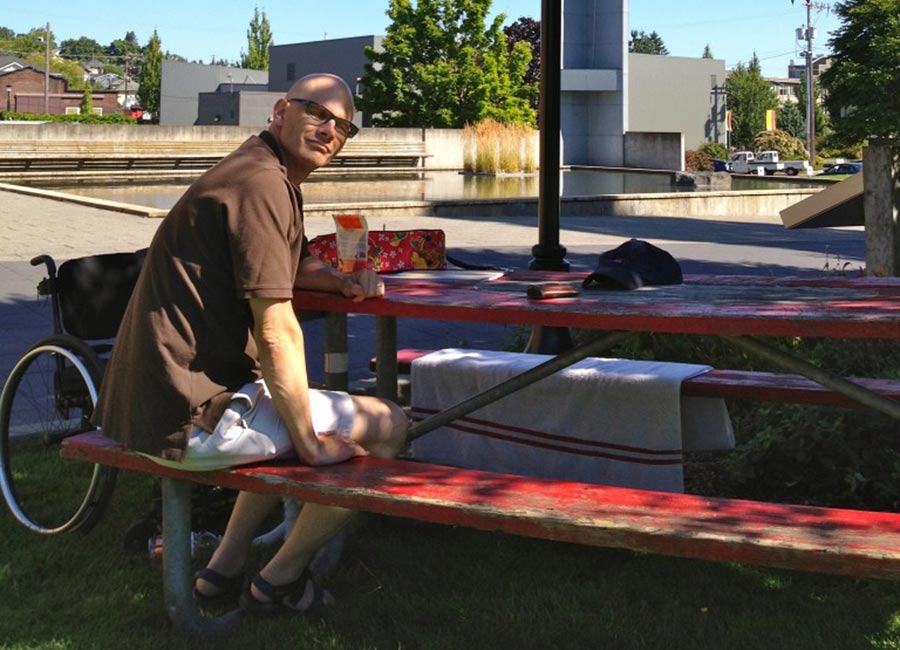Why did I have to risk falling over to access the lawn at a local college? Why is there a concrete barrier around the grass that prevents me from getting to the green commons in my wheelchair? Did any thought go into constructing the barrier? Was it thought to be a barrier by the people who built it or approved the building of it? Has anyone questioned the existence of the barrier? Are there other barriers that were not conceived as barriers? Have those barriers been considered? And was there any thought given to how to remove the barrier? Did the idea of a barrier to equal access and inclusion ever cross anyone’s mind at the college over the course of years that it was there? Am I the only one who has seen this barrier? Am I the only one who fell while trying get over the barrier? If a man in a wheelchair falls while trying to cross a concrete barrier at a college in the summer, does he make a sound? Does anyone help him up? Does anyone think about acting upon the cause of the fall? How long will be it before others in chairs can breech the barrier and get to the grass; the well-manicured, lush, cool grass?
In this particular instance, I did fall backwards. I wanted to join my spouse and dog who were picnicking on the other side. I was not physically hurt but the experience was hurtful: to my psyche and to my piece of mind. It threatened to ruin the beautiful, sunny day. I was pre-occupied with this barrier that others need not consider. This campus is not a level playing field, literally and figuratively. In its current position,the concrete barrier is endowed with the ability to deny access, to discriminate, to marginalize, exclude.
Would removing this small barrier make a difference? YES. The removal of even a small barrier whether it be physical, attitudinal, cultural or whatever increases access and equity for people with disabilities.


Thanks for that “clever” and for your attention. I do hope you will return. More soon. I promise.
Randy – you’re writing is eloquent and poignant. It is changing the way I see the world, and for that, thanks. Keep up the great work!
I couldn’t have started this blog without you, Peter. You are the catalyst!
Honored to be part of it!